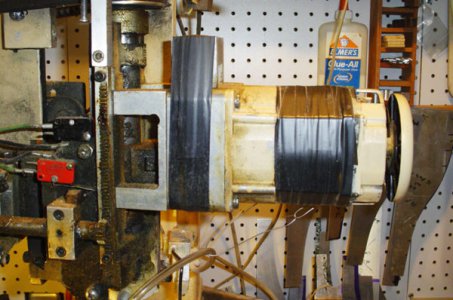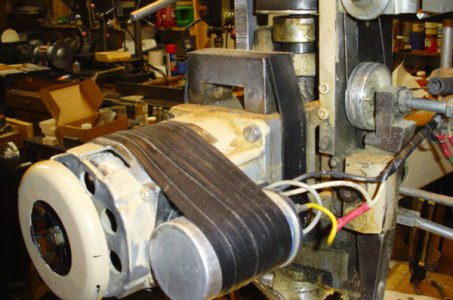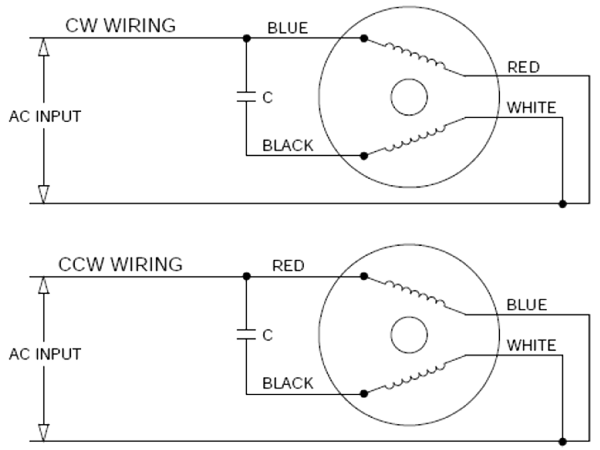- Joined
- Dec 27, 2014
- Messages
- 4,056
My propeller machine was made perhaps 30 or more years ago from (probably) used components. It has three motors, one spins the spindle at 10,300 rpm, another moves the table back and forth, at milling speeds, and a third moves the sanding drum (spindle) up and down perhaps once every second. It does this moving a cam at that speed, so the revs of the motor is (I'm guessing) 60 rpm. This motor has stopped working, shutting down production. I have an order for a number of propellers going to England which I don't want to loose.
Below are pictures of the motor.

This is the "front" of the motor, as viewed from the work station. Its 6 inches long and 3/5 in diameter.

And this is the back. The circle on the left end is a fan which spins with the motor.
I assume the aluminum cylinder is a capacitor, which I am concerned about discharging.
When I got the machine the previous owner told me that if they ever stopped I'd have to take them apart and clean the little balls in the end. He was not a machinist, and I'm looking for advice on "What is this motor?" and "How do I fix it?"
I am a tool maker, not a repairman, so any and all suggestions are most welcome.
Below are pictures of the motor.

This is the "front" of the motor, as viewed from the work station. Its 6 inches long and 3/5 in diameter.

And this is the back. The circle on the left end is a fan which spins with the motor.
I assume the aluminum cylinder is a capacitor, which I am concerned about discharging.
When I got the machine the previous owner told me that if they ever stopped I'd have to take them apart and clean the little balls in the end. He was not a machinist, and I'm looking for advice on "What is this motor?" and "How do I fix it?"
I am a tool maker, not a repairman, so any and all suggestions are most welcome.


